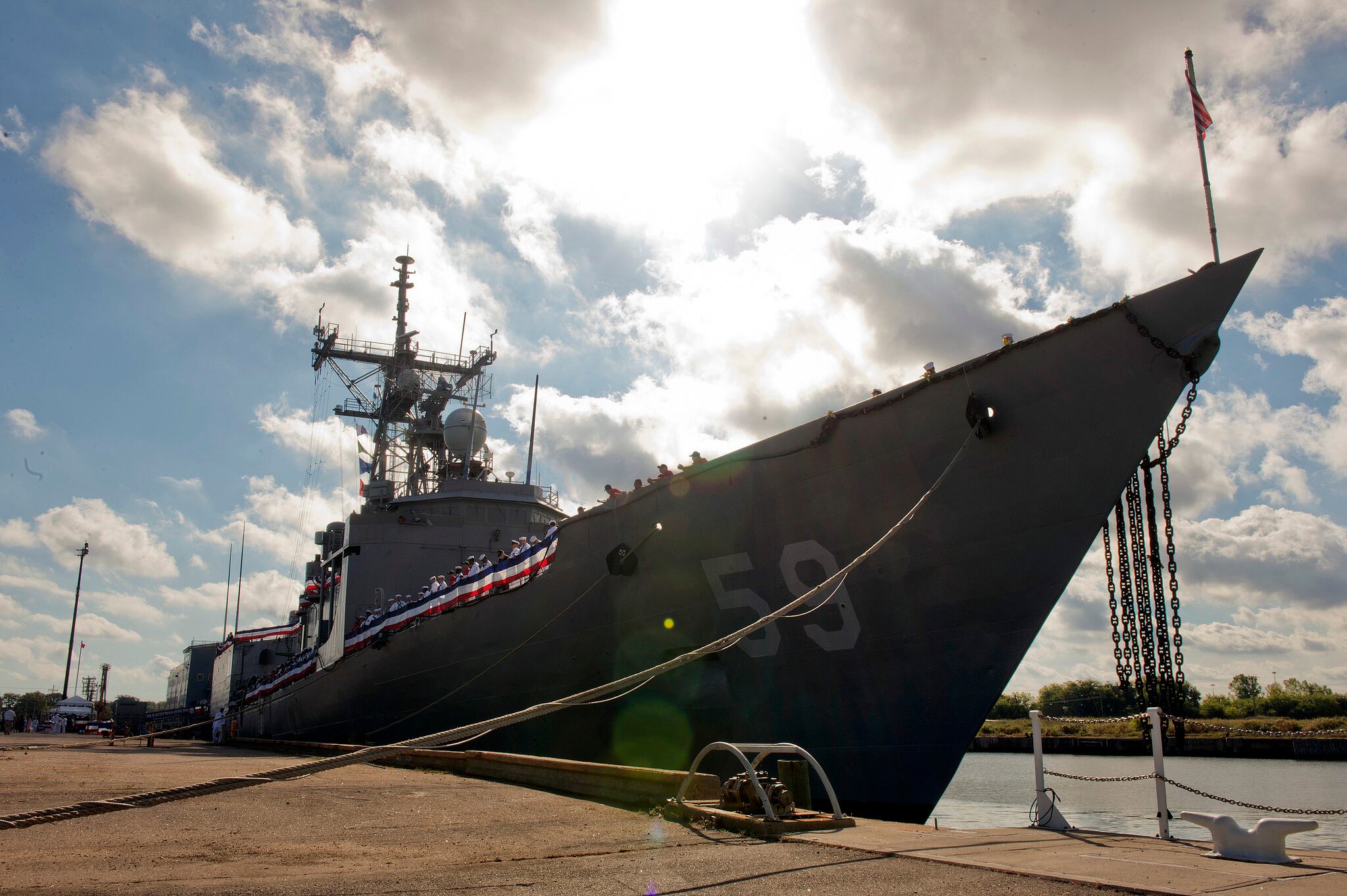WASHINGTON — Amid a national opioid addiction crisis, the military command covering the Southern Hemisphere has the resources to intercept only a quarter of known narcotics shipments to the U.S., its commander said Thursday.
But it could do more with littoral combat ships and maritime patrol aircraft, U.S. Southern Command’s chief, Adm. Kurt Tidd, told the Senate Armed Services Committee on Thursday. For now, its maritime presence hinges on the Coast Guard’s aging fleet of medium-endurance cutters.
Opioids — prescription and illicit — are the main driver of America’s drug overdose deaths, according to the Centers for Disease Control. President Trump has called the opioid epidemic “the worst drug crisis in American history.”
Latin American partnerships have yielded “pretty good situational awareness” on most drug trafficking to the U.S., Tidd said. However, he said: “Of the known tracks, we are only able to intercept 25 percent of them, about one-fourth.”
Maine independent Sen. Angus King vented frustration that that statistic hadn’t budged since White House Chief of Staff John Kelly, then-SOUTHCOM commander, testified years earlier. More surveillance assets need to be devoted to the problem, he said.
“Four people have died in the last hour, and you’re giving me the same figures that Gen. Kelly gave us three or four years ago,” King said. ”Can you commit to me that you will move this to the highest level of priority, and kick some behinds and take some names?”
Tidd affirmed he would, saying the biggest impediment is budget instability.

Northern Command’s chief, Air Force Gen. Lori Robinson, told lawmakers the opioid crisis is “a personal issue” that her command is working with the U.S. Department of Homeland Security and Mexico.
Fresh from a SOUTHCOM-hosted interagency conference last week, Tidd said that opioids require new thinking and better collaboration. For now, the command is taking a threat-network based approach.
“I’m not prepared to tell you we have an answer to it yet, but we recognize the scope of the problem, the seriousness of the problem and the work remaining to be done,” Tidd told Sen. Jeanne Shaheen, D-N.H., whose state leads in opioid-related deaths.
Asked what capabilities would close the gap, Tidd named the littoral combat ship, packaged with rotary-wing aircraft and interceptor boats, and coupled with maritime patrol aircraft.
SOUTHCOM’s maritime presence in the region relies today on medium-endurance cutters, the Coast Guard’s aging workhorse, he said. The Coast Guard’s national security cutters are not always available.
RELATED

The command relies on the Coast Guard over the Navy, as “a matter of strategic priorities and availability of forces. We’d run out of forces before we’d run out of missions.”
Navy presence in the 4th Fleet area has declined in recent years since the 2015 retirement of its last Oliver Hazard Perry-class frigate, which had been the mainstay of the service’s counter-drug operations.
But help is on the way for 4th Fleet, the Navy’s South-and-Central America-focused organization that provides forces for Southcom.
The Navy is stationing its mono-hull variant LCS in Mayport, Florida, all except the lead ship Freedom and second-in-class Fort Worth, which will remain in San Diego, California.
Right now, the Milwaukee and Detroit are stationed at Naval Station Mayport, which provided most of the ship for counter-narcotics patrols when the frigates were still active. The Little Rock has also left the shipyard in Wisconsin and is destined for Mayport, but is marooned in Montreal after getting iced in for the winter.
There are 12 more Freedom-class LCS bound for Mayport in various stages of construction or planning.
The Navy plans to start providing more forces to 4th Fleet once Mayport starts to deploy their new ships.
Joe Gould was the senior Pentagon reporter for Defense News, covering the intersection of national security policy, politics and the defense industry. He had previously served as Congress reporter.
David B. Larter was the naval warfare reporter for Defense News.







